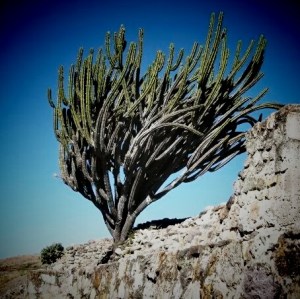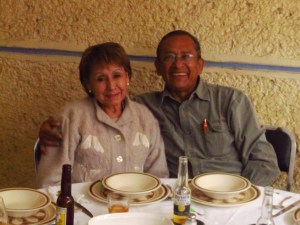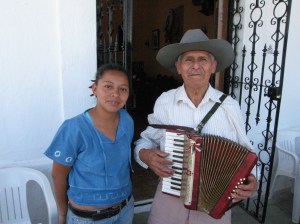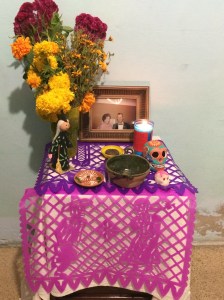-

-
Donald J. Trump wants to build walls, deport 11 million immigrants.
-

-
Welcome to Donald Trump’s America. (Photo by Chip Somodevilla/Getty Images)
-

-
Mexicans rounded up for ‘repatriation’ in 1930s.
Immigrants aren’t ‘real Americans’, are they? I mean, if we let them stay, they’ll change the character of the country. It won’t be America anymore, will it?
That’s the visceral feeling of many who rally to Donald Trump, and nativist organizations, like NumbersUSA, Federation for American Immigration Reform (FAIR), and others. Many who affiliate with white nationalist groups see immigrants as an existential threat. Do you?
President Obama and the Republican Congress agree the United States has a dysfunctional immigration system. Unfortunately, they don’t agree on the parts that are broken or the fixes it needs. That leaves a policy vacuum. Nature and politics abhor vacuums and Trump is ready to fill it with a simple, comprehensive ‘final solution’. So he says.
If elected, Trump says he’ll keep immigrant families together and then deport 11 million of them – including their U.S. citizen children. He would build a wall along 1,900 miles of the border and force Mexico to pay for it. In addition, he would rewrite the long-established meaning of the 14th Amendment! Should we take Trump’s ideas seriously?
Yes! And here’s why. What he proposes has happened many times in U.S. history at the hands of a xenophobic minority and a passive majority. To understand what is going on, it’s important to step away from the rabid carnival barker on television and consider the history of forced removals in American history. It’s an ugly picture, largely ignored in our public education, and exposes the racist skeletons in our national closet.
From time to time, especially during economic downturns, U.S. policies have taken two approaches to non-whites and immigrants – exclude them or remove them.
Excluding immigrants begins with The Naturalization Act of 1790 that prohibited the naturalization of non-whites. The 14th Amendment to the Constitution effectively overturned it. After intense lobbying from Californians, The Chinese Exclusion Act of 1882 prohibited the immigration of Chinese. Chinese laborers arrived to work in the 1850s gold rush, and later on the railroads. When economic times got tough, Californians claimed the Chinese took jobs that white men could hold. The Act remained in place until 1943.
The Immigration Act of 1924 set quotas limiting annual immigration from each nation to 2 percent of immigrants from that country resident in the U.S. in 1890. During the recession following WWI, some Americans agitated to stop immigration of southern and eastern Europeans (Italians, Poles, Jews,) because they competed for jobs. The Act banned immigration of Asians and Arabs. The eugenics movement was at its peak and pushed hard to ban those they considered ‘racially inferior’. This pseudoscience regarded poverty as a sign of genetic inferiority, promoted forced sterilization of the mentally ill, and pushed laws prohibiting interracial marriage in order to improve the original ‘American stock’. The Immigration Act of 1924 remained in force until 1965.
Those whom Americans didn’t want, they proposed ‘repatriating’ or deporting to another country. In 1821, the American Colonization Society, an organization founded by Northern abolitionists and some Southerners, who believed free blacks wouldn’t fit into a white society. They set up a colony in West Africa that became Liberia but relatively few slaves were freed when Whitney’s cotton gin spurred cotton production and increased the need for slaves.
Whites wanted Native Americans land and, beginning in 1830, the government forcibly removed the Chickasaw, Choctaw, Muscogee, Creek, Seminole, and Cherokee nations from the southeastern states (to expand cotton and slavery), and relocated them in what became Oklahoma. Among them were many European Americans, black freedmen, and slaves. Thousands died on the ‘Trail of Tears’ west from exposure, disease, and starvation, including more than 2,000 of the 16,000 Cherokee. After that, the U.S. used treaties, military and economic force to ‘relocate’ indigenous nations on ‘reservations’ of lands deemed worthless to whites, and even these were whittled away. Native Americans weren’t granted citizenship until 1924!
After the U.S.-Mexican War, Mexico ceded vast territories to the U.S. in the Treaty of Guadalupe Hidalgo. Mexicans residents became citizens of the United States, but on paper only. Once socially and economically prominent Mexicans were pushed aside, abused, and defrauded by white settlers rushing into Texas, New Mexico, Arizona, and California. Soon, the ‘Jim Crow’ laws applied to Mexicans as well as blacks in Texas and elsewhere.
Mexican immigration wasn’t formally restricted and, during the Mexican Revolution from 1910-1920, millions of Mexicans fled to safety in the United States, settled in Los Angeles and other cities, found work, created communities, and started families.
As the U.S. slipped into economic depression, and unemployment approached 25 percent, white Americans demanded the removal of Mexicans to free jobs for white Americans and reduce relief roles. From 1930 to 1936, U.S., state, and county governments in California, Texas, and Colorado, rounded up and deported to Mexico, without due process, as many as two million people, including an estimated million U.S. citizen spouses and children of Mexican immigrants. Esteban Torres was a three-year-old boy when he father was ‘repatriated’ in the 1930s. He never saw his father gain, but Esteban gained his citizenship and served in Congress from 1983-1999.
In 1942, with the U.S. at war in Europe and Asia, the U.S. and Mexican governments established a formal guest worker program – braceros – in lieu of undocumented immigration to work on farms and railroads in place of the men in the armed services. The program continued until 1965. Mexican farm workers could earn more in the U.S. than working in Mexico; American farmers wanted low-wage workers and brought them in illegally rather than deal with the rules of the guest worker program. Mexico farm owners and businessmen protested the loss of workers to the U.S. and, beginning in 1954, the two countries launched ‘Operation Wetback’ to capture and deport over a million undocumented Mexicans. The tide of Mexican immigration has ebbed and flowed depending on the economy.
Are immigrants just one more commodity in a throw-away economy?
Anti-immigrant xenophobia is surprisingly consistent across cultures and centuries. Its proponents see immigrants as different, of less value as humans, less civilized, or capable of becoming ‘true Americans’. In words both coarse and polite, they call immigrants economic parasites, bottom feeders, and the cause diseases and crime that will drag down the nation.
These sentiments greeted the Irish, who arrived in the U.S. during the 1840s, and the Slavs and Italians in the early 1900s. Nazis used similar arguments against the Jews, the Hungarians make similar claims for not admitting Syrians trying to reach Germany today. The ignorance behind eugenics still casts an ugly shadow.
Xenophobes seem always in search of a ‘final solution’. The means have varied over the years – forcing indigenous nations onto reservations, passing laws to exclude the Chinese, ‘repatriating’ Mexicans, incarcerating U.S. born Japanese, and sending Jews to gas chambers.
As for walls, they haven’t worked throughout history. Perhaps there is something comfortable in the idea of wall, but it is false security. The Chinese built its Great Wall to block nomadic invaders – it didn’t work. The Romans built Hadrian’s Wall to keep out the Scots – it didn’t work. The Berlin Wall fell in our lifetime. People find a way over, under, or around.
What are the facts? Immigrants have always been at the core of American history and economic growth. Deporting all of them would remove six percent of the U.S. workforce, reduce GDP by six percent, and cost $400-600 billion. Given low U.S. birthrates and an aging population, immigration is essential and can raise GDP by one percent and reduce the deficit by $2.5 trillion in 20 years. Unauthorized immigrants make up half of California’s farm workers. Americans would feel the effect immediately in a scarcity of fruits and vegetables.
Are immigrants a drag on the economy? No! The economic drag comes from a person who makes campaign contributions to secure business favors from government officials, bends the bankruptcy laws to advantage and sticks someone else with the bills, and asks for tax abatements and incentives instead of putting his own assets at risk.
Can repatriation happen again? Yes! If we’re silent in the face of intolerance.
Polls consistently show a strong majority of Americans favors giving undocumented immigrants a path to citizenship. But a poll response isn’t a commitment; it isn’t the same as stepping up to put pressure on lawmakers and demand a reform of immigration laws.
A majority of Americans isn’t opposed to granting immigrants a path to citizenship but it’s not their priority, either. At most, it’s passive support that can melt quickly unless we act. If you believe immigrants are vital to our economy, a dynamic in our way of life, and support the American credo on the Statue of Liberty, then demand immigration reform with a path to citizenship. Your ancestors were once immigrants. Don’t let your silence support xenophobia. Honor your heritage. Speak out.






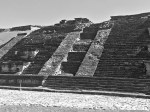



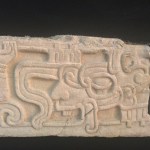
 Taking the long view—four millennia in the Museo Amparo. An afternoon in Puebla’s anthropological museum is a good place to thing amid its outstanding artifacts from Mesoamerican civilizations. I go often, and my four hours there (this time) passed through 4,000 years of human experience. The objects showed me other ways to view the cosmos, human fertility, divinities, writing, art, household utensils and political organizations. The variety of objects reflected amazing styles, some formal and realistic, others loose and abstract, still others as fresh as contemporary forms. Without writing, they used clay funereal figures with symbolic heads, noses, mouths and tongues to symbolize the virtues and accomplishments of the deceased—an obituary in ceramics. A video gallery of contemporary oral histories recounts cultural ideas and beliefs in Náhuatl, Mixe, Mixteca, Zapoteca, Chichimeca, and Maya—ancient languages still alive and necessary to meet human needs now as in the past.
Taking the long view—four millennia in the Museo Amparo. An afternoon in Puebla’s anthropological museum is a good place to thing amid its outstanding artifacts from Mesoamerican civilizations. I go often, and my four hours there (this time) passed through 4,000 years of human experience. The objects showed me other ways to view the cosmos, human fertility, divinities, writing, art, household utensils and political organizations. The variety of objects reflected amazing styles, some formal and realistic, others loose and abstract, still others as fresh as contemporary forms. Without writing, they used clay funereal figures with symbolic heads, noses, mouths and tongues to symbolize the virtues and accomplishments of the deceased—an obituary in ceramics. A video gallery of contemporary oral histories recounts cultural ideas and beliefs in Náhuatl, Mixe, Mixteca, Zapoteca, Chichimeca, and Maya—ancient languages still alive and necessary to meet human needs now as in the past. From museum galleries to artisans’ stalls in the mercado, you can see how creative energy flows from culture to culture, century to millennium. Sometimes the expression takes a new direction, at other times it doubles back on itself. Artifacts and products still throb with the human energy that pulses in our own veins and minds. You need only spend a day at the Amparo to see that primitive and advanced are meaningless ideas about cultures. Their abstract fallacy is the illusion there exists an objective standard by which to measure cultures. Human imagination seems always capable of rising to meet the needs and resources of a time and place. Comparing the artifacts and ruins of the past with the present doesn’t tell us we are more advanced as human beings. ‘Progress’ is a seductive but conceited notion; a false assumption that cultures rise upward through time toward some imaginary finish line. The ruins tell us another story.
From museum galleries to artisans’ stalls in the mercado, you can see how creative energy flows from culture to culture, century to millennium. Sometimes the expression takes a new direction, at other times it doubles back on itself. Artifacts and products still throb with the human energy that pulses in our own veins and minds. You need only spend a day at the Amparo to see that primitive and advanced are meaningless ideas about cultures. Their abstract fallacy is the illusion there exists an objective standard by which to measure cultures. Human imagination seems always capable of rising to meet the needs and resources of a time and place. Comparing the artifacts and ruins of the past with the present doesn’t tell us we are more advanced as human beings. ‘Progress’ is a seductive but conceited notion; a false assumption that cultures rise upward through time toward some imaginary finish line. The ruins tell us another story. It makes me wonder if, in the rush of modern, urban life in the U.S., we take too little or no time to acknowledge the presence of those we don’t know. We all hunger for connection, for the affirmation of our being, but I fear we may have wrung it out of our culture with our utilitarian focus on work, and our isolation within the bubbles of shared opinions, social class, and race. Still, I believe there is a simple, human path out of our present divisions—to simply and sincerely acknowledge the presence of the ‘other,’ the person you don’t know, the person who thinks differently, or the foreigner you may otherwise fear. A simple acknowledgment of our shared existence as humans makes other connections possible and narrows the distances between us. It isn’t difficult.
It makes me wonder if, in the rush of modern, urban life in the U.S., we take too little or no time to acknowledge the presence of those we don’t know. We all hunger for connection, for the affirmation of our being, but I fear we may have wrung it out of our culture with our utilitarian focus on work, and our isolation within the bubbles of shared opinions, social class, and race. Still, I believe there is a simple, human path out of our present divisions—to simply and sincerely acknowledge the presence of the ‘other,’ the person you don’t know, the person who thinks differently, or the foreigner you may otherwise fear. A simple acknowledgment of our shared existence as humans makes other connections possible and narrows the distances between us. It isn’t difficult.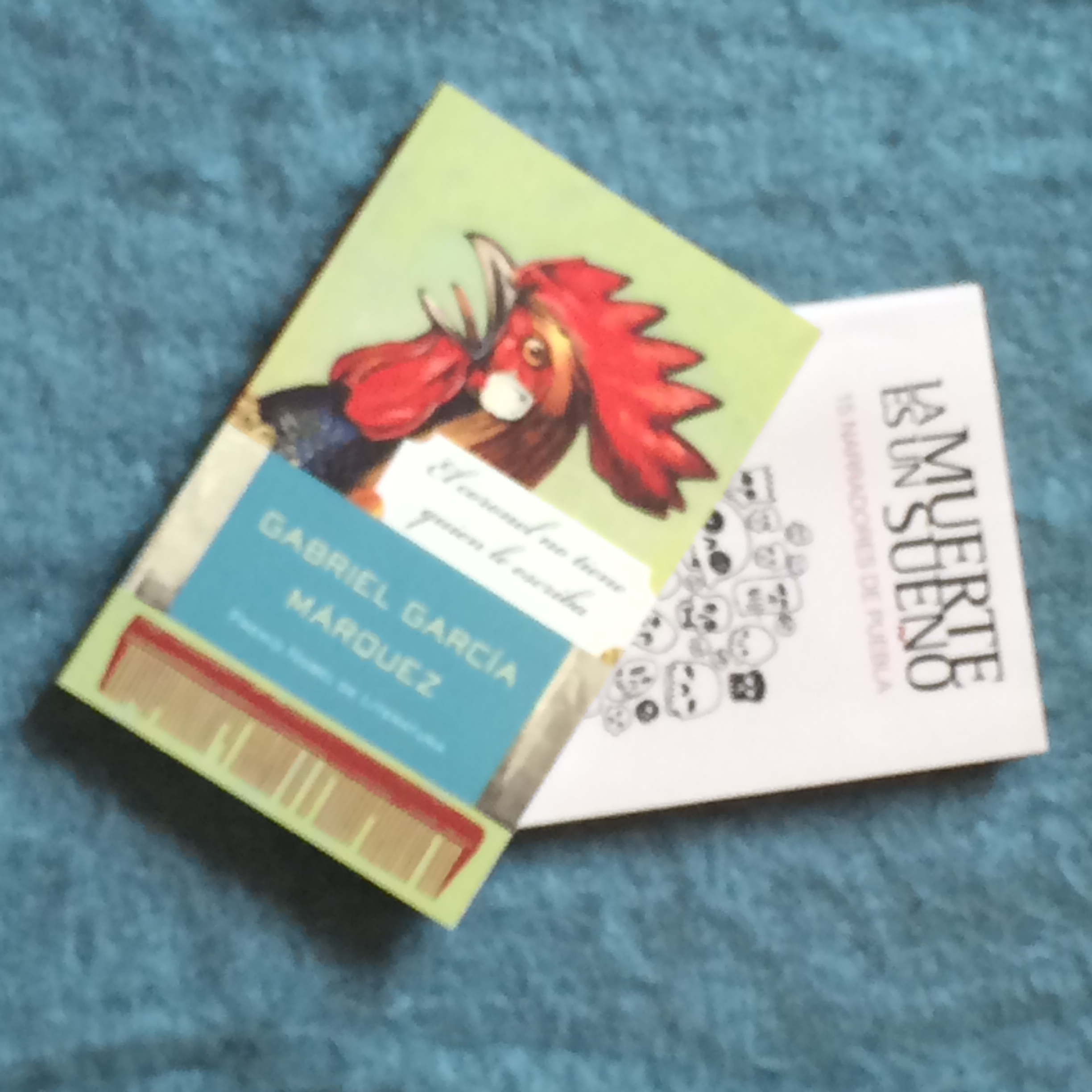


 communal effort. Sunset was nearly on us when we slipped through the cattle gate and hiked up the mountainside through the grass. The large tank sat on a concrete pad fed by tubes from springs tapped farther up the slope. A tube at the bottom of the cistern channeled water to a dozen smaller tubes that ran downhill to the houses in the hamlet below. Water is scarce in parts of Mexico, and even scarcer in the midst of a drought. The construction, operation, and maintenance of the simple cistern is a communal project, a shared vision. This small project, multiplied by millions of people, is what makes a great civilization. This is greatness working in an indigenous municipality. We can all learn from the past, if we will.
communal effort. Sunset was nearly on us when we slipped through the cattle gate and hiked up the mountainside through the grass. The large tank sat on a concrete pad fed by tubes from springs tapped farther up the slope. A tube at the bottom of the cistern channeled water to a dozen smaller tubes that ran downhill to the houses in the hamlet below. Water is scarce in parts of Mexico, and even scarcer in the midst of a drought. The construction, operation, and maintenance of the simple cistern is a communal project, a shared vision. This small project, multiplied by millions of people, is what makes a great civilization. This is greatness working in an indigenous municipality. We can all learn from the past, if we will.